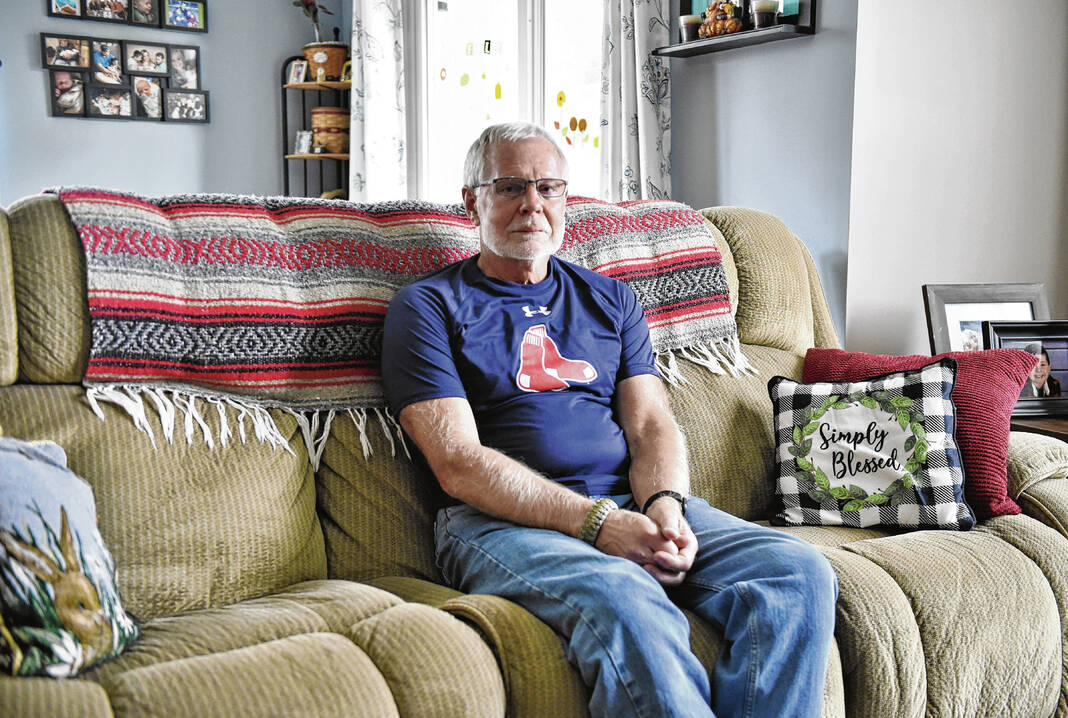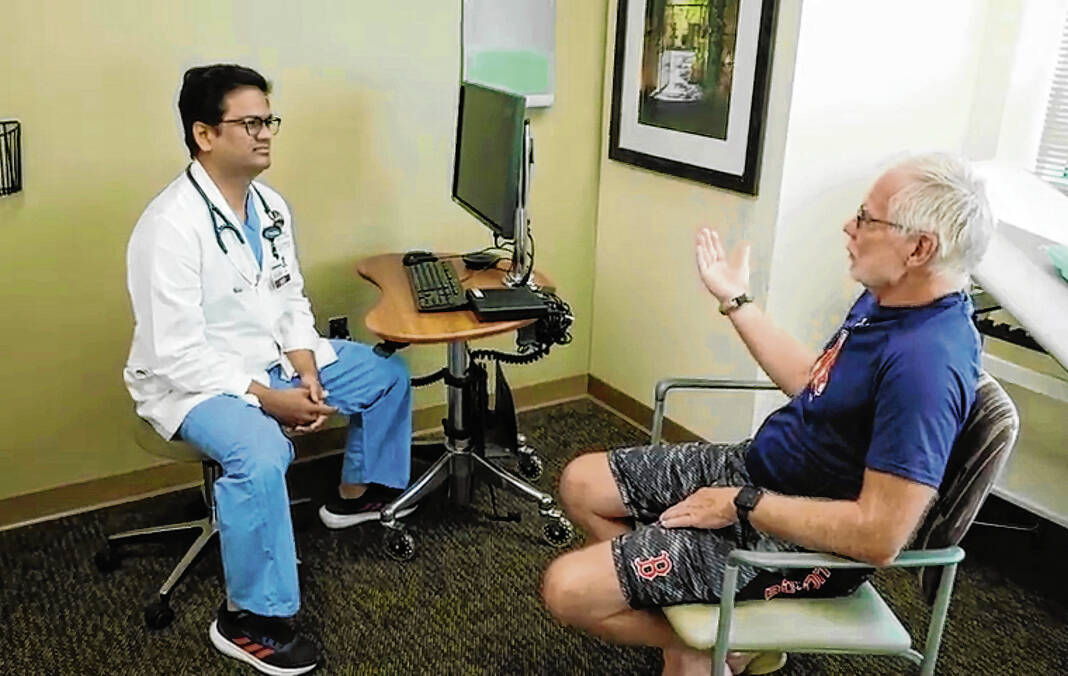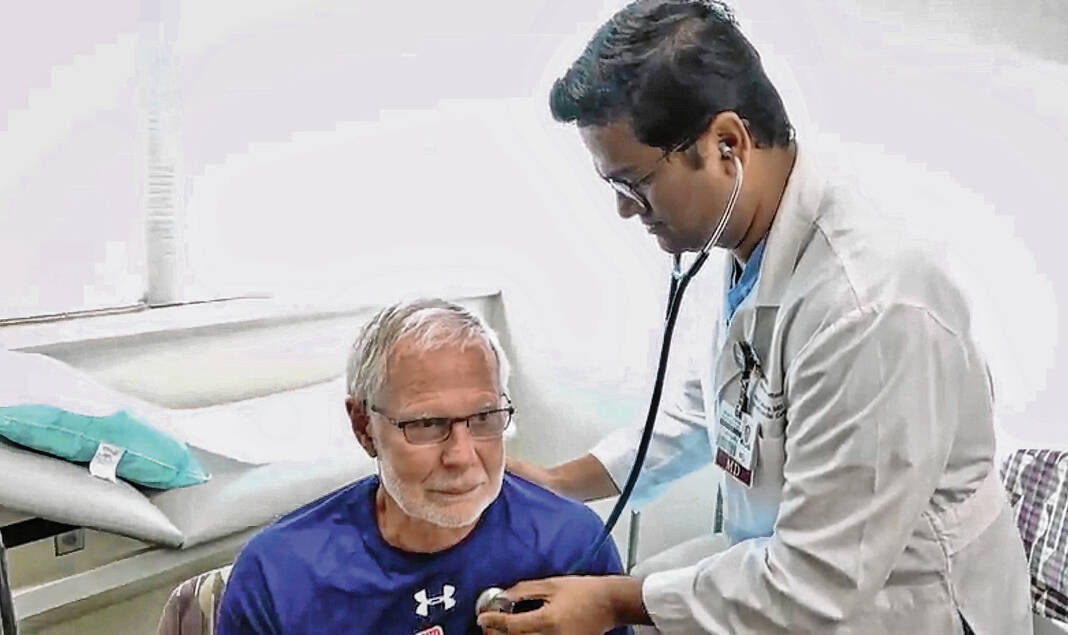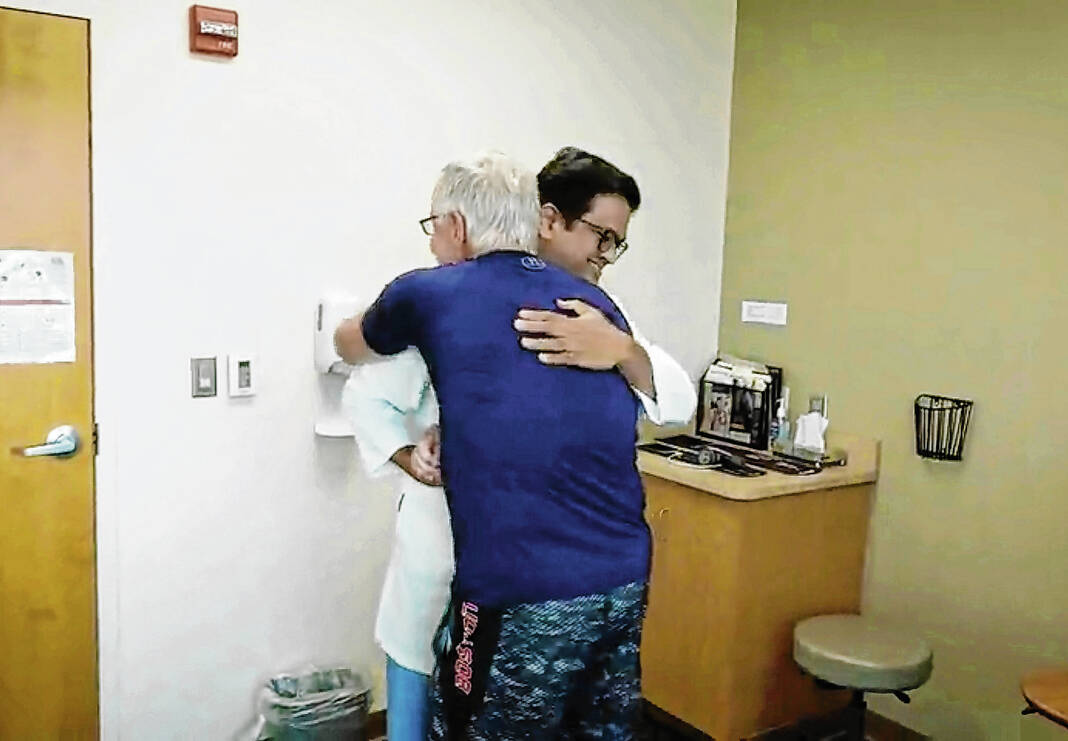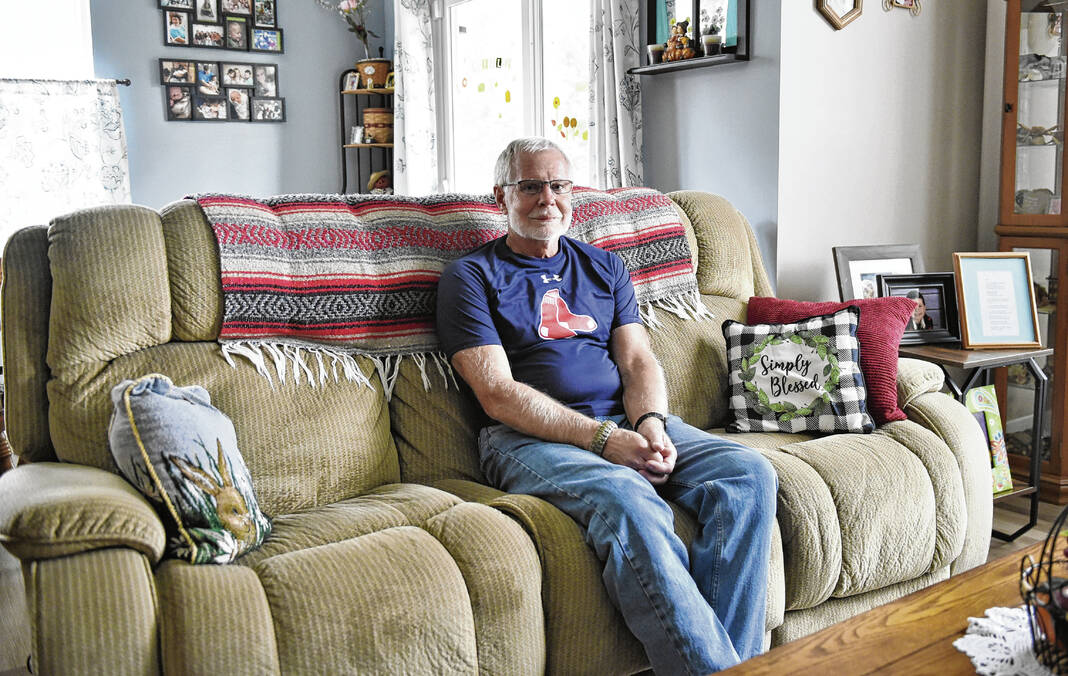
Bob Carter, a Bargersville resident, talks with Community Health Network cardiologist Dr. Nitesh Gadeela. SUBMITTED PHOTO
In a moment, the world went dark.
Bob Carter had returned home from his morning work and was preparing to take a walk around his Bargersville neighborhood. He felt good; nothing betrayed the fact that a killer was lurking inside his body.
But suddenly, the pain in his chest overwhelmed him.
“I came into the house and told (my wife), ‘My chest is killing me.’ She got out of bed, went into the bathroom and I was lying on the floor,” he said. “If she hadn’t been here, I’d be dead.”
Carter survived his brush with the “widowmaker” — a heart attack caused by the complete blockage of his left anterior descending artery. With surgery and physical therapy, the 68-year-old has made a full recovery.
An avid exerciser who watched his diet, Carter never suspected he was at risk for a heart attack, let alone one that has only a 12% survival rate for people who suffer it outside a hospital setting. He’s using his experience to emphasize the importance of heart scans and cardiovascular health, as cardiac arrest can strike even the most unlikely of patients.
“I’ve always eaten right, I’ve always exercised, but don’t think that’s enough. When you get older, you really need to go see a heart doctor, because you never know,” he said.
Carter had paid attention to his heart health throughout his life. He exercises four days a week, mixing weight training with cardiovascular workouts. A typical workout featured 20 minutes of cardio training, plus planks, push-ups, resistance bands and crunches for another hour.
But increasingly, Carter showed concerning signs that something was off with his cardiovascular system.
“We’d walk into the store, and all the sudden he’d say he didn’t feel good and had to get something to eat,” said Kathy, his wife. “Finally, I had him get it checked.”
In 2005, he had a cardiac stress test done, to determine how his heart functioned during high-impact activity. The test revealed he was experiencing premature ventricular contractions, or extra heartbeats that disrupt regular heart function.
At the same time, his heart had an ejection rate of 60%, which is a healthy level.
“I had felt on and off for years. And it just got progressively different,” he said.
Doctors prescribed medication to treat the premature ventricular contractions, and Carter thought it was taken care of. When the problem persisted, he had a procedure done in early March to reduce the extra beats.
During a follow-up checkup with Community Health Network cardiologist Dr. Nitesh Gadeela, Carter complained he was still suffering the contractions. Gadeela scheduled a coronary angiogram, a scan to get a better view of his heart.
“I didn’t make it,” Carter said.
On the morning of May 23, an eruption of plaque completely blocked his left anterior descending artery, which supplies nearly 50% of the blood to the heart.
“He had no blood supply to the heart,” Gadeela said. “A heart that has no blood supply is not compatible with life unless intervened upon.”
When he suffered his heart attack, Kathy Carter rushed to call the paramedics. She gave him aspirin and kept him awake until they arrived.
Carter’s heart stopped beating twice, once in the ambulance and again at the emergency department of Community Hospital South. He doesn’t remember any of it; the entire day is blank.
But for Kathy, the experience was terrifying.
“I was shocked — total shock,” she said.
Doctors put two stents in his heart, as well as a balloon pump to keep the artery open.
He spent a week in the intensive care unit. His family kept constant vigil over him, with his sons and grandchildren visiting on a regular basis.
“Every day, the nurses knew they’d be there. They’d open that door at 7 a.m., and in they’d come,” he said. “They were out there every day for the first week or so.”
As Carter recovered, his medical team painted a picture of what happened. The plaque eruption stemmed from a genetic trait, which no amount of exercise or diet could overcome.
“It was a shock to me,” he said.
Carter ended up being in the hospital for 16 days, finally coming home in early June. He completed rehabilitation to strengthen his lungs, heart and other systems throughout the month of July.
His life has slowly returned to normal.
“I was a little hesitant to do some of the stuff I used to do, and I couldn’t move my foot so I had a hard time doing some exercises. But I started doing different exercises myself to try to work that out,” he said. “I’m back to my normal full workout.”
Carter’s experience has put renewed focus on cardiovascular health in the family; his children and their spouses have all had examinations to determine their heart attack risks.
With everything that has happened, Carter wishes more people knew about the heart dangers even seemingly healthy people can suffer.
“I had no symptoms. (Gadeela) told me if my heart wasn’t strong and I wasn’t in shape, I never would have made it,” he said. “But exercising and eating right is part of it, but going and getting checked has to be part of it too.”
Steps to Prevent Heart Disease and Stroke
1. Know your risk: If you’re 40-75 years old and have never had a heart attack, you can use a tool provided by the American Heart Disease called the Check. Change. Control. Calculator. Certain factors can increase your risk, such as smoking, kidney disease and family history.
2. Eat a healthy diet: Center your eating around vegetables, fruits, whole grains, legumes, nuts, plant-based proteins, lean animal proteins and fish.
3. Be physically active: Adults should aim for at least 150 minutes of moderate-intensity aerobic activity each week, or 75 minutes of vigorous activity.
4. Watch your weight: If you’re overweight, lose weight by eating fewer calories and exercising more.
5: Live tobacco-free: Don’t smoke, vape or use tobacco products.
6. Manage conditions: Work closely with your health care provider if you have high blood pressure, high cholesterol, diabetes or other conditions that put you at greater risk.
7. Take your medicine: Your doctor may prescribe statins to control blood sugar, cholesterol and blood pressure. Don’t take daily aspirin unless your doctor tells you to.
— Information from the American Heart Association


